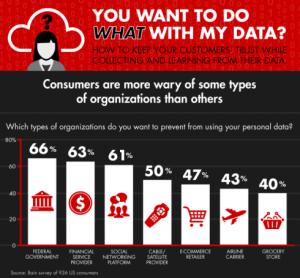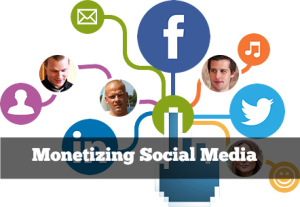
Last week we were lucky enough to be joined by social selling expert, Zoe Sands who is the principal consultant at Zoe Sands & Co. Ltd. Zoe assists organisations in connecting sales with marketing to prove ROI. Here is a recap on exactly what was discussed.
The power of your employees
Don’t underestimate the power of your employees. They are your greatest advocates and should be leveraged to fully break into the social sphere. Not convinced? Think of it this way, if you have 10,000 employees, and you enable 20% of your employees to socially sell your business you effectively have 2,000 more opportunities to do so. This represents more windows, more shop fronts and a much increased social presence, far greater than if you only promoted your messages through your businesses social media account(s).
Buying behaviour has changed
With a rise in online influencers, and 67% of the buying cycle occurring online even before a sales rep is contacted, it’s more important than ever that you influence buyers at an earlier stage. If you interject earlier then you’re ahead of many of your competitors. That is of course if they themselves have not got on the employee advocacy bandwagon already, in which case it’s a must just to keep in line with competitors. And let’s face it, there is so much more competition with online technology now allowing brands to easily compete on a global scale. It’s time you stepped up your game.
Social media is where it’s at
You need to make sure your information is readily available, engage with influencers and get on board with an employee advocacy program, where your employees push out your content to their connections on social media. As Zoe Sands explained, ‘Fish where the fish are’. This is so true. With social media ever increasing in popularity, it’s important you take advantage of this channel.
Establish where your target audience is. Whether that be on; LinkedIn, Twitter, Facebook, Instagram etc. Use these networks and leverage your employees to reach out to them. If you operate in the B2B arena it is likely you will favour Twitter and LinkedIn, but that’s up to you to decide. Your business may be different.
Enable social selling
You can’t possibly expect all of your employees to be equipped to socially sell your brand straight away. Various steps need to be taken first. These include:
- Social media collaboration platform – You need a program that will enable your brand to regularly share informative content for your target audience to see and be made readily aware of. There are also other essential aspects, such as ensuring you maintain control of your content, can filter it appropriately, report on its effectiveness, notify employees of new content, and lastly ensure it is quick and easy to use. This will allow employees in a few clicks to share your content to their desired social networks. A complicated platform would disengage employees. Reporting is also key, so you can track strategies and identify what is working and what’s not, making changes where necessary.
- CRM system to track leads – If your employees will be accountable for partaking in the buying cycle, this will be a huge motivator to share your content on social media. To track this you would need a CRM system where employees can record all communication occurring on social media with potential consumers. This way you can also really establish the effectiveness of social selling.
- Training – To expect employees to conduct social selling effectively, it is important you provide in-depth training, ensuring every employee is at the same stage and confident to start effectively socially selling your business.
- Success indicator – It’s important you consider which exact triggers can be considered accountable to the final sale being achieved. This can include ‘likes’, ‘retweets’, replies to comments, or sharing your content just to name a few. By using a social media amplification platform such as socialondemand, you will be able to easily measure your posts effectiveness.
- Pilot test – Before fully adopting a social selling program, you want to first of all test it. See what works, what doesn’t and make any changes required to improve its effectiveness. Also before fully deploying it, evaluate the ROI you expect to receive. Then you will be able to establish whether the investment required to roll this out to all employees will be worth it.
You’ve got to be realistic
Don’t be fooled into thinking social selling will speed up your buying cycle, it won’t. It will just mean that your brand will be seen by your target audience earlier in the buying cycle, at the research stage, making them aware of your offerings. And don’t think you will receive a return on investment overnight because you won’t. It will take time for this program to become established, for it to work and for you to create the perfect social selling recipe. You’ve got to be realistic about what you will achieve, so set your expectations fairly.
Want to watch the full webinar? Click here. Please feel free to comment and add your opinion or if you have any additional tips you would like to add, please do so.
Digital & Social Articles on Business 2 Community(37)
Report Post





